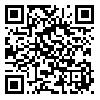Volume 9, Issue 5 (Shenakht Journal of Psychology and Psychiatry 2022)
Shenakht Journal of Psychology and Psychiatry 2022, 9(5): 55-65 |
Back to browse issues page
Download citation:
BibTeX | RIS | EndNote | Medlars | ProCite | Reference Manager | RefWorks
Send citation to:



BibTeX | RIS | EndNote | Medlars | ProCite | Reference Manager | RefWorks
Send citation to:
Hakimi L, Vaez Mousavi M, Bagherli Z, Nasri S. The persistent effect of problem-solving and growing interpersonal relationships methods on the cognitive-social dimensions of the group environment among athletes. Shenakht Journal of Psychology and Psychiatry 2022; 9 (5) :55-65
URL: http://shenakht.muk.ac.ir/article-1-1540-en.html
URL: http://shenakht.muk.ac.ir/article-1-1540-en.html
1- PhD Student, Department of Motor Behavior, Central Tehran Branch, Islamic Azad University, Tehran, Iran
2- Professor, Department of Physical Education and Sport Sciences, Imam Hossein University, Tehran, Iran , Mohammadvaezmousavi@gmail.com
3- Assistant Professor, Department of Motor Behavior, Karaj Branch, Islamic Azad University, Tehran, Iran
4- Associate Professor, Department of Educational Sciences, Shahid Rajaee Teacher Training University, Tehran, Iran
2- Professor, Department of Physical Education and Sport Sciences, Imam Hossein University, Tehran, Iran , Mohammadvaezmousavi@gmail.com
3- Assistant Professor, Department of Motor Behavior, Karaj Branch, Islamic Azad University, Tehran, Iran
4- Associate Professor, Department of Educational Sciences, Shahid Rajaee Teacher Training University, Tehran, Iran
Abstract: (881 Views)
Introduction: Understanding the cognitive-social factors that contribute to group success is crucial in creating and maintaining a group and its cohesion process.
Aim: The present study was conducted to investigate the persistent effect of problem-solving methods and create interpersonal relationships on the cognitive-social dimensions of the group environment of athletes.
Method: This study was a semi-experimental type of research with a pre-test and post-test design. The statistical population was all female students of Islamic Azad University- Yadgar Imam Branch in the academic year 2017-2018. The statistical sample included 57 volunteer students who were randomly divided into three groups such as control, problem-solving exercises, and interpersonal relationship exercises. After the pre-test, all participants performed the desired exercises for 12 weeks and then took part in the post-test. The group Environment Questionnaire of Caron & et al (1987) was used to evaluate the cognitive-social dimensions of the group environment. Data were analyzed using ANOVA with repeated measures and Bonferroni's posthoc test using SPSS version 20 software.
Results: The results showed a significant difference. The time and group effects showed that the interventions had a significant effect on the dimensions of individual attractions to the group–social and group integration (P<0.05). The results also showed that a significant difference was observed in the interaction effect of the time*group. The results of the Bonferroni post-hoc test also showed that the method based on interpersonal relationships has a significant effect on the cognitive-social components of the group environment (P<0.05).
Conclusion: According to the results of this study, it can be said that if the communication channels between the coach and team members are open so that each member can share the cognitive-social dimensions related to their behavior with others, it will lead to better performance.
Aim: The present study was conducted to investigate the persistent effect of problem-solving methods and create interpersonal relationships on the cognitive-social dimensions of the group environment of athletes.
Method: This study was a semi-experimental type of research with a pre-test and post-test design. The statistical population was all female students of Islamic Azad University- Yadgar Imam Branch in the academic year 2017-2018. The statistical sample included 57 volunteer students who were randomly divided into three groups such as control, problem-solving exercises, and interpersonal relationship exercises. After the pre-test, all participants performed the desired exercises for 12 weeks and then took part in the post-test. The group Environment Questionnaire of Caron & et al (1987) was used to evaluate the cognitive-social dimensions of the group environment. Data were analyzed using ANOVA with repeated measures and Bonferroni's posthoc test using SPSS version 20 software.
Results: The results showed a significant difference. The time and group effects showed that the interventions had a significant effect on the dimensions of individual attractions to the group–social and group integration (P<0.05). The results also showed that a significant difference was observed in the interaction effect of the time*group. The results of the Bonferroni post-hoc test also showed that the method based on interpersonal relationships has a significant effect on the cognitive-social components of the group environment (P<0.05).
Conclusion: According to the results of this study, it can be said that if the communication channels between the coach and team members are open so that each member can share the cognitive-social dimensions related to their behavior with others, it will lead to better performance.
Type of Study: Research |
Subject:
Special
Received: 2022/07/18 | Accepted: 2022/10/9 | Published: 2022/11/22
Received: 2022/07/18 | Accepted: 2022/10/9 | Published: 2022/11/22
Send email to the article author
| Rights and permissions | |
 |
This work is licensed under a Creative Commons Attribution-NonCommercial 4.0 International License. |







